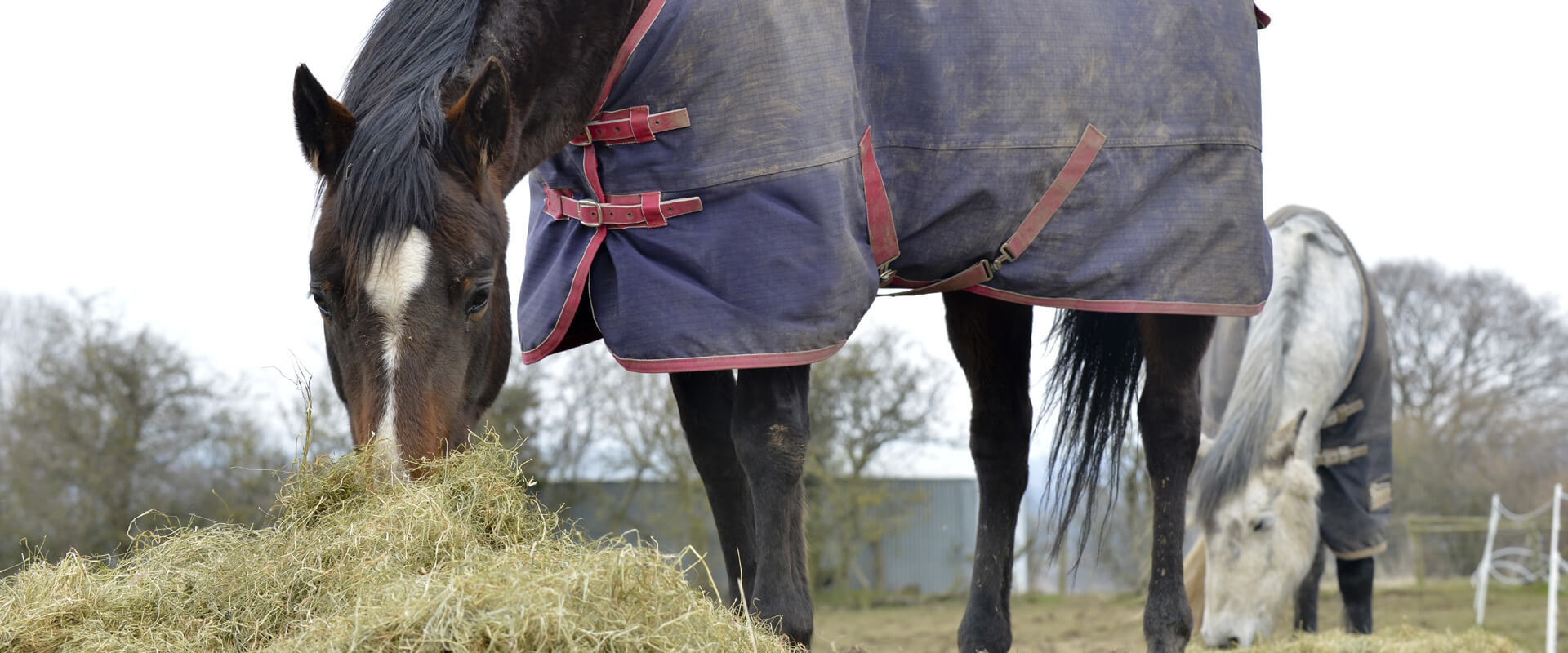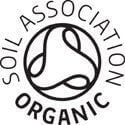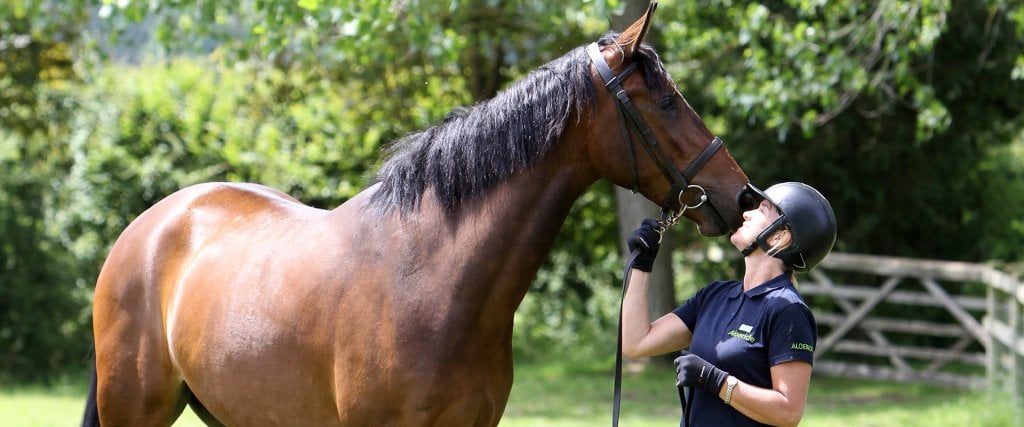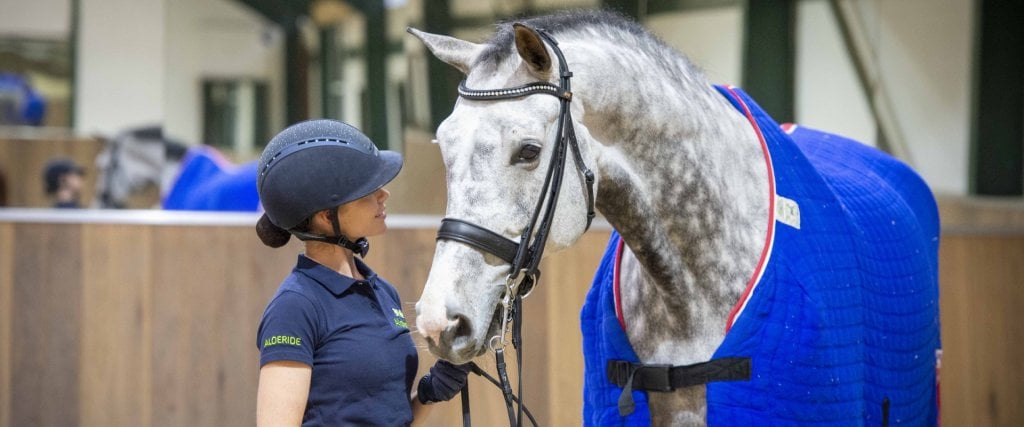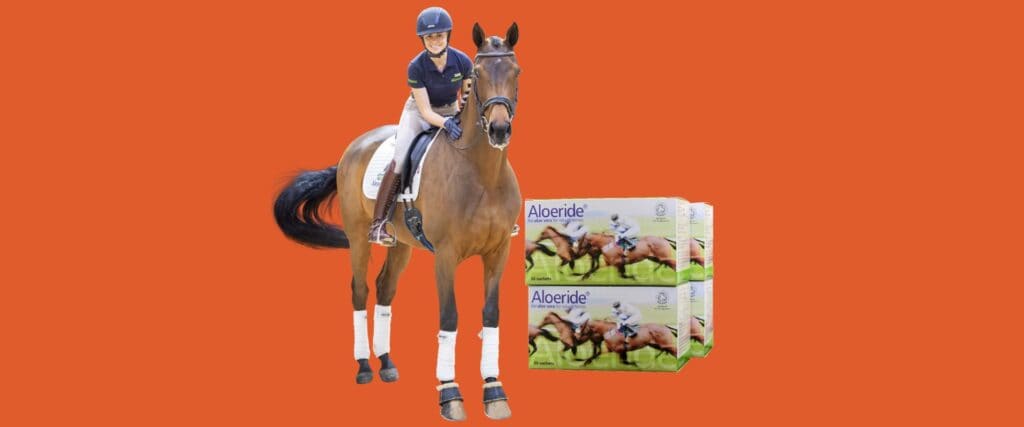Would you feed Hay or Haylage
Would you feed hay or haylage? From my web article on Spring Grass Colic, you may recall why early season grass is different from late season grass. Beyond those Non-Structural Carbohydrates (NSC), I mentioned the seasonal change in Potassium levels and this is where things may become interesting… Any chat article about hay and haylage must start with what soil you grow it on, what species you grow, how you farm it, as well as what you can feed your horse so it can cope better with total carbohydrate load (i.e. DE, NSC, WSC). As a caring horse owner, these are the kind of questions you need to ask. After all, the soil is where all grass, haylage and hay starts, so shall we. Should you wonder what’s the difference between hay and haylage, then this page really is for you!
Grass cut regularly, as haylage or hay, removes very large amounts of Potassium. Unless this is replaced, soil Potassium concentrations will fall. The old fashioned and best way of doing this, is with Farm Yard Manure (FYM). In recent years there is evidence of an overall increase in the number of grassland soils below potassium target index, as well as a decline in the use of potash fertiliser. Fertilising with FYM beats NPK fertilisers hands down because, predictably, FYM contains many more nutrients than only Nitrogen, Phosphorus and Potassium (e.g. it also contains Calcium, Sulphur, Zinc, Copper, Manganese, Iron and other micronutrients that were in the diet of the animals that produced the FYM. According to the Potash Development Association (PDA), spread at 40 m3/ha with cattle slurry 2% DM with 2.4 kg K2O/m3, FYM applies 40 x 2.4 = 95 kg/ha K2O to the soil. The aim of PDA is to improve the understanding of potash in soils and plant nutrition, so that the amount used, and the timings of the applications, are correct for the crops and grass being grown.
All this might be mortally boring had it not been for a company in North Yorkshire that suggests adding two strains of bacteria to promote hay fermentation as well as adding Potassium Sorbate to the grass before baling. If the grass was good to start with, those lactic acid bacterial microbiome would be there aplenty. It is interesting that adding Potassium would improve matters significantly only if the soil wasn’t prepared properly in the first place.
What’s the difference between hay and haylage
Superfluous for most but, as to the question “what’s the difference between hay and haylage”, haylage is grass that has been cut earlier than hay i.e. at a younger stage of growth when it is cut. Then it is left to wilt instead of completely drying out like hay. Haylage is preserved using fermentation (hence baled and wrapped in several layers of plastic so its moisture content remains high).
Weather(!) you feed Hay or Haylage
Predictably the nutritional value of hay and haylage depends mainly on when it’s harvested and, yes, ultimately on the great British weather. With NSC in perspective of Spring Grass Colic, it is hardly surprising that early cut haylage is more suited to horses with high energy demands. With spring grass bursting out of the ground, it has a high leaf to stem ratio and is very nutrient dense.
Most advice on hay and haylage is straight forward about grass types, harvest time and feed hygiene (check for contaminants such as weeds, thistles, bracken, ragwort, mould, spores, fungi; check for heat in bales; check for physical appearance i.e. does the bale spring open on cutting the string; check for smell). All of it is easy until it comes to blood sugar management… I would like to coin another phrase here. ‘Power Up Your Pancreas’ because, from all that I have read, the equine nutritional focus is on adaptive feeding with seemingly less focus on how you can improve the function of your horse’s pancreas that regulates blood sugar levels. From research, we know that you can!
Haylage usually is lower in sugar than hay because fermentation turns carbohydrates into lactic acid and volatile fatty acids (VFA). Haylage is higher in protein and more digestible than hay, and this is what gives it a higher DE content. So, as with any food or feed, rationing to work and needs is necessary and feed from smaller-holed hay nets. Haylage, being cut earlier in the season, suffers minimal leaf fragmentation. Hay, being cut later in the season, suffers significant leaf fracture resulting in dust as well as loss of water-soluble carbohydrates, protein, vitamins and minerals.
In order to make hay safe for horses that must be fed ‘low energy feed’, very common advice is for instance “soak late cut (and therefore high fibre) meadow hay for 8-12 hours to reduce the sugar and calorie content, and add a balancer. However, research (Longland et al., 2011) shows that, in order to get a notable reduction of Water Soluable Carbohydrates (WSC), hay needs to be soaked for around 16 hours, by which time it is far less palatable. This is because nutrients including electrolytes leached out (remember that you put salt on your food to ‘bring the taste out’). In the Longland research, despite a mean loss of 27%, WSC contents of seven of the hays soaked remain above the suggested upper limit for laminitic and metabolic horses (100g/kg Body Weight). Having soaked your hay, the question is, which balancer balances what was there to start with that may have leached out? By increasing a soak from 8-12 hours to 16 hours, the chance of bacterial contamination increases, leading to a reduction of the hygienic quality (Moore-Colyer et al., 2014). Any soak must be in fresh water. Steaming significantly reduced mould and bacterial numbers. *dust may contribute to the development of Chronic Obstructive Pulmonary Disease (COPD) commonly known as a dust cough
An equine good-doer may be the pre-diabetic equivalent to an overweight person. You know that horse don’t get full blown diabetes, they get Insulin Resistance. Anyway, you don’t make a pre-diabetic healthy by feeding comparatively ‘calorific’ empty food. Sure, you might feed a good-doer meadow hay (high fibre, lower protein and energy content than legume hay) in preference to seed hay (immature plants, high protein and energy content) or alfalfa (Lucerne) hay (high nutrient legume, high protein and energy content). All haylage may have too high protein and energy content for it anyway. It makes sense to address intake, but it is wise to simultaneously address what strengthens that good-doer of the human kind or your horse’s pancreatic ability to release adequate insulin and glucagon, and for peripheral cells to remain receptive to this.
Here is your introductory Aloeride Offer!
Give your horse 12 litres of Soil Association Organic Aloe Vera Barbadensis Miller in 30 palatable powder servings. One supplement with many benefits to your horse (and you)..
Nutrients known to help bloodsugar management
Chromium (Cr) is fundamental to proper insulin function; it eases the attachment of insulin to the body cell’s insulin receptors. A deficiency of Cr can result in insulin resistance in horses (and additionally diabetes and cardiovascular complications in humans). Harvested forages have greater Cr concentrations than concentrates, and alfalfa hay or haylage has greater Cr concentrations than grass hay. Chromium in alfalfa hay or haylage averages 0.522 mg/kg of DM. The Cr content in either your hay or haylage is what was extracted from the soil it was grown on. Naturally-chelated Chromium is infinitely preferable to Chromium Picolinate supplements.
Vanadium (V) has been shown to mimic many of the metabolic actions of insulin both in vivo and in vitro. The mechanism(s) of the effect of V on the decrease in appetite and body weight is still unclear. Mimicking insulin, it may inhibit hypothalamic neuropeptide Y (NPY) which is known to be related to appetite, and increase leptin secretion in adipose tissue. In obesity, a decreased sensitivity to leptin occurs (similar to insulin resistance in type 2 diabetes). Interestingly, German vet, Dr Susanne Weyrauch-Wiegand said that in Germany, under EU law, horses are not allowed to be supplemented with Vanadium. I’m not sure how that pans out in Britain.
Niacin (vitamin B3) acts by protecting pancreatic beta cells from autoimmune destruction. Not the nicotinic acid form of niacin used for lowering cholesterol and triglycerides, but instead the amide form of niacin (nicotinamide), which does not cause flushing. Its most significant function related to diabetes is its involvement with the Glucose Tolerance Factor (GTF).
Riboflavin (vitamin B₂) a horse’s poor glucose control will produce free radicals, just like human diabetics do. Riboflavin-5-Phosphate works through the pathway of making more glutathione. Legume forage like alfalfa and clover are the best sources of B2 which may favour the use of haylage. Intestinal flora also synthesises riboflavin which is why feeding your horse specifically to grow a healthier gut microbiome helps it to cope better with total carbohydrate load.
Aloe vera research has shown it to be beneficial for Diabetes II as well as for Diabetes I (the latter is perhaps a little surprising). Of the right quality and in the right dosage, it offers benefit to the insulin resistant horse, the good-doer, the laminitic and horses with Cushing’s. The problem is that there are stellar differences between different brands. We provide independent laboratory tests so that you can make a well-informed choice. Good aloe vera offers an enormous spectrum of nutrients that help carbohydrate load sensitive horses do better.
Vitamin D is a fat-soluble vitamin that, in humans, has been associated with both type 1 and type 2 Diabetes. Horses ‘only’ get insulin resistance which equally requires carbohydrate load vigilance and vitamin D reasonably only plays a role in stabled and in rugged horses.
Lipoic acid (C8H14O2S2) has been shown to enhance glucose uptake in skeletal muscle tissue, thus improving glucose regulation in people with diabetes mellitus. A study published in the Journal of Equine Veterinary Science, (volume 31, 250-251) revealed the same benefit when lipoic acid was given to pony mares. Researchers administered 10 mg of lipoic acid per kg of body weight mixed with maple syrup, to ponies receiving a grass hay diet. A control group was given the same maple syrup feeding, without lipoic acid. The ponies receiving the lipoic acid required less insulin to remove glucose from the blood. The researchers concluded that delivery of lipoic acid improves insulin effectiveness, thereby lowering blood glucose as well as circulating blood insulin levels.
Unfortunately, the fatty acid composition of forage lipids is dominated by α-linolenic acid C18H30O2 (three carbon double bonds, hence C18:3). Forage C18:3 concentrations vary among species and cultivars (orchard grass, timothy, alfalfa, red clover), these are higher in summer regrowth than in spring growth, decrease with maturity, drying, wilting and both silage and haylage additives, and increase with nitrogen fertilisation. So, grass, haylage or hay does not provide lipoic acid, there are small amounts in spinach, broccoli and carrots for the horse on a ‘Hester Blumenthal’ diet.
Next to NSC, hay and haylage contain Water Soluble Carbohydrates (WSC). Imagine putting one spoonful of sugar in cold water and one in a warm cup of tea. In a similar vein, it may not surprise you that research found that soaking hay in cold water took 16 hours to get a notable reduction of WSC by which time nutrients had leached out, and the hay had become far less palatable. Furthermore, after ‘hibernating’ on/in DM, bacteria welcome a 16-hour soak and proliferate under such conditions – not good for your horse! It is equally unsurprising that steaming hay significantly reduces WSC. If you start with already low-to-moderate NSC hay (i.e. NSC ~ 10%), then the WSC reduction from steaming brings the total carbohydrate load to within much safer limits. Also, the heat of steaming significantly reduces mould and bacterial numbers.
Any thoughts on balancers?
Mine are that, without precisely knowing the nutrient content of your haylage or hay, you do not know what to balance. Precious little is known about balancing, sure enough, we know the Cu:Zn ratio, the Ca:P ratio and, from the Table Of Elements, that one mineral facilitates the uptake of a second and inhibits the absorption of a third. So, how broad is the balancer that you might be looking at, what does it contain and notably what does it not? Might a man-made balancer by its very nature be unbalanced?
Studies by the National Research Council have shown that Ca:P ratios between 1:1 and 7:1 result in nearly equal performance providing the animal’s Phosphorus requirement is met. This differs much from the ‘known’ 1.2:1 or 2:1 ratios you may have read about. How balanced are the known mineral interactions: Copper-Molybdenum-Sulphur, Sulphur-Selenium, Calcium-Phosphorus, Calcium-Zinc, Calcium-Manganese, Potassium-Magnesium? With many minerals, as their amount in the diet increases, the percentage that is absorbed decreases. This has been recognised with Calcium, Zinc and Iron. How well such a nutrient is absorbed also depends on how the manufacturer chelated it, because not all amino acid chelates are absorbed well. Well-produced, natural products have the significant advantage of nature balancing not just its inorganic mineral content, but also its amino acid content, its lipid ratios and all those ratios in proportion to one another.
Just when it seems that FYM fertilised soil may be the ideal to grow haylage and hay on, beware of the modern snake in the grass. Because the feeding of antibiotics to promote growth in farm animals has been prohibited in the EU, producers have turned to very high doses of Zinc (e.g. 2500 ppm) and Copper for antibacterial effects in the intestinal tract. This has led to concerns about soil levels from FYM applications especially from intensive operations like pig or poultry farms. Long live horse manure and cow pads. Remember, what goes ‘around comes ‘around.
Would you feed hay or haylage
Let’s see how “would you feed hay or haylage” might be answered by the people who grow the stuff. The British Grassland Society is a forum for those with an active interest in the science and practice of grass and forage production & utilisation. “Hay used to be considered as a filler. Some horse sectors now require protein levels of 8%. Fertiliser applications are normally 50% to 75% that of normal agricultural grassland recommendations [i.e. for grazing]. Over-fertilising affects crop quality, so pay more attention to minor nutrients by regular soil testing. Using high levels of fertiliser to generate high grass growth produces crops which are hard to keep standing and also difficult to dry for hay or haylage. Many equine nutritionists now recommend feeding haylage instead of hay. Haylage is much closer to the horse’s natural diet of grass, both in texture and nutritional value. It is more palatable and digestible than hay, it has a higher nutritional value and is less dusty. If made properly, it will contain few, if any, mould spores and its higher moisture content (about 40%) helps prevent any spores that are present from becoming airborne and causing COPD problems. Once a bale has been opened it should be used as quickly as possible as exposing it to air means there is now the potential for moulds to develop. Mouldy haylage should not be fed to horses but, provided the moulding is not severe, it can still be fed to cattle. If it is very mouldy dispose of it. Sometimes on opening you see tiny white/cream round ‘colonies’ on the grass blades and stems. They have a creamy consistency to the touch, not powdery or fluffy. These are yeasts, not moulds, and will not do any harm to horses as they do not produce spores. Most horse probiotics actually are yeast products.
You need to get used to handling haylage so as not to over- or under-feed your horse. A typical 500 kg 16hh riding horse requires a minimum daily roughage intake of about 1% body weight, ie 5kg of hay, or, due to its higher moisture content, 7 to 8.5kg of haylage. But, although you need more haylage by weight, you need much less by volume as, again due to its higher moisture, haylage is much denser than hay. At the beginning it is best to weigh out the required amount each day until you get used to judging it. Haylage dry matter has about 10% higher nutritional value than hay so, if you are feeding the equivalent in terms of dry matter, you can also cut down on supplementary feed as less will be needed to meet the horse’s energy requirements.”

